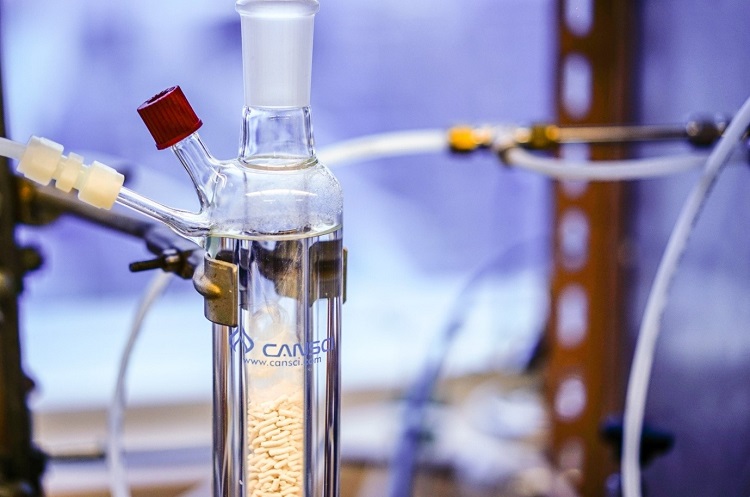According to the World Health Organization, 1.6 million lives were lost in 2016 following selected chemical exposure. If you handle chemicals at home or in your workplace, be wary of these statistics. You need to know how to handle chemicals, as a seemingly insignificant blunder can have devastating impacts.
Before SDS is obtained, the manufacturer must test the chemical compound with the tools of analytical chemistry, for example nuclear magnetic resonance, about which to read you can click here.
If you’re not familiar with chemical handling safety tips, you’re in the right place. Our guide has outlined top safety tips in chemical handling.
-
Be Familiar With the Chemicals You’re Using
For you to use chemicals safely, you need to be familiar with them. The Safety Data Sheet (SDS) is a great place to start if you want to know more about hazardous substances in the chemicals you buy. Understanding the components of the chemicals you’re using will allow you to remain safe in the workplace or at home.
If there’s a new chemical you’re about to use in the workplace, request an SDS from the supplier. The chemical details will make it easier for you to check the potential hazards and any necessary changes in work design. For instance, the management might decide to get several protective clothing such as gloves to ensure chemical handling safety is maintained.
The SDS allows you to know more about a chemical’s property and the potential hazards and risks when using it. Analyze the SDS critically as some products might have multiple hazards like being combustible and toxic when inhaling. Understanding the product will help you know the best protective gear to purchase and the operating approaches you need to incorporate.
-
Safe Chemical Storage
Chemicals tend to have violent reactions when they mix with other substances. The results are often a fire eruption, toxic gas clouds, or an explosion. You need to store the chemicals you’re using in your workplace in accordance with the set-out regulations.
The SDS has a section detailing how to store the chemical. It further lists incompatible products that you need to keep separate to avoid violent reactions. Poor storage is one of the ways people mishandle chemicals, leading to unwarranted exposure.
As part of the safety storage procedure, keep the chemicals in a secure place to avoid ending up in the wrong hands. You might also want to have the right labels for the chemicals and a warning sign to show if a product has hazardous components.
The storage area should have adequate ventilation. It ought to be away from some common activities. If you want to ensure maximum chemical safety, your chemical should be far from the food preparation area.
-
Have Adequate Safety Equipment
In the situation where working with chemicals causes the production of harmful fumes or gases, fume extraction safety equipment is of extreme importance. Searose Engineering Solutions advises to get contact a professional to guide you through the appropriate safety devices to extract these fumes and gas in the safest possible way. This will include some form of extraction device, whether that’s a fume extraction arm, modular ducting or a combination of the both that work for your specific scenario.
Safety equipment for handling chemicals should be a priority in the workplace. In fact, OSHA chemical safety tips involve the handling equipment to ensure that everyone is safe.
Container labels and signs reinforce safety. They remind users of chemical handling safety, which should be a priority, especially in the workplace. The signs need to be placed in the right containers while ensuring they are visible enough for everyone.
A typical organization should have a fully functional eyewash station, first aid kit, fire extinguisher, and drench showers. The equipment ensures that chemical exposure is addressed well to avert further problems. Firms should have enough tools to handle cases of emergency after chemical exposure. Firms also need to make sure these tools are maintained and working effectively, when working with chemicals gas detection is of utmost importance. Therefore these devices need to be serviced appropriately by a professional like Gas Calibration Sydney.
It is crucial for everyone in the workplace to know more about these chemicals. Understanding dichloromethane and other hazardous materials make it easier to know the required safety tools to prioritize. The safety equipment that you have put in place will have considerable impacts on these chemical accidents.
-
Appropriate Spill Response
How do you deal with spilled chemicals? Spilling of chemicals is something that can happen to even the most careful technician. You need to have a plan on how you’ll handle the chemical to avoid hazardous chemical exposure.
The spill response plans ought to highlight the steps that need to be taken and the safety equipment to be used. A first-aid kit should also be ideal at this point, as the spilled chemical might have landed on someone’s body.
As part of a spill response plan, consider incorporating spill prevention strategies, proper ventilation, reporting, and evacuation. Depending on your workplace’s nature, you can have a spill kit at different areas within the space to ensure that workers can access the equipment easily. Strategic spill response will be a great solution for those wondering how to handle chemicals safely.
-
Staff Training
Staff training and education are essential tools that you can use to inform managers and workers of workplace hazards. The training seeks to enhance the safety and productivity of your staff. The more workers understand chemicals and how to handle them, the easier it will be to have a safer environment.
OSHA has a laboratory standard that involves having chemical hygiene plans to avoid exposure to harmful chemicals. Workers won’t know how to handle chemicals well until you train them. Training should be an ongoing process that addresses different aspects of chemical exposure.
The training ought to help workers to understand;
- Potential hazards of a particular chemical they use
- First-aid measures to take in case of chemical exposure
- How to help an exposed co-worker
- Proper chemical storage
- How to handle a chemical safely
- Emergency training such as evacuation procedure
Laboratories have different needs and unique challenges when it comes to chemical handling safety. However, the training is quite generalizable to other settings and laboratories. Following some of these training pointers will reduce cases of chemical exposure, leading to more workplace safety.
Chemical Handling Safety Is a Crucial Aspect of Any Workplace
The impacts of chemical exposure are quite grave. You need to familiarize yourself with chemical handling safety, especially in a work setting where the use of chemicals is common. With the right strategies, maintaining chemical safety is possible.
An organization should provide the resources necessary to ensure that employees are not at risk of chemical exposure. More importantly, organizations should train workers to understand more about safe chemical handling. Companies must adhere to OSHA guidelines to come up with their strategy for maintaining chemical safety.
Our site has a range of articles from home improvements to health and fitness. Keep exploring to read more of our informative and educative posts.
 HammBurg Be informed with latest news, reviews, entertainment, lifestyle tips, and much more.
HammBurg Be informed with latest news, reviews, entertainment, lifestyle tips, and much more.




